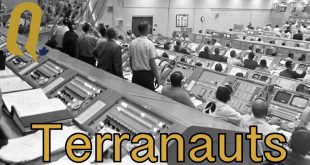There are important lessons to be learned from the on-orbit servicing of the Hubble Space Telescope.
In today’s SpaceQ podcast we feature a Future in Space Operations teleconference with Canadian space exploration historian Chris Gainor.
The topic of Gainor’s talk was Hubble Space Telescope’s Contributions to Servicing Spacecraft On Orbit. For anyone interested in on-orbit spacecraft servicing, Gainor’s research which will soon be published as a NASA Special Publication book, and should be essential reading.
The Hubble Space Telescope wasn’t designed to be serviced in the manner it was, and yet when critical problems arose, new techniques and plans were conceived which led to multiple servicing missions. The lessons learned in the servicing of Hubble shouldn’t be forgotten.
Listen in.
Hubble Space Telescope’s Contributions to Servicing Spacecraft On Orbit presentation
Listen to and Subscribe to the Podcast
You can subscribe to the podcast using your favourite podcast app (iOS and Android). For apps like Pocket Cast or OverCast you can search using the podcast title SpaceQ.
The podcast is also available on Apple Podcasts, Google Podcasts, Spotify and SoundCloud.
 SpaceQ Space news and analysis.
SpaceQ Space news and analysis.



I am fairly sure Hubble WAS designed to be serviced with the expectation of replacing the scientific instruments. Of course, that assumed the shuttle could travel to it.
In part, that’s true, however, it wasn’t designed to be serviced in the way it was. It meant thinking outside the box and coming up with new protocols, plans, and tools. And even then there was no guarantee it would work.